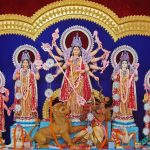Puranas – Their Relevance – Part 1
Understanding Hindu Puranas
Puranas and their relevance to the modern world, in fact how did these Puranas get into the present shape, what are their content, why are they important for Hindus and what is the scope of its content. These are many such interesting and thought-provoking areas within the Puranas and also explanation to 18 Hindu Puranas will be done in this new series. To start with we will talk about understanding and appreciating Puranas, then we go briefing about 18 Hindu Puaranas, later every part will be about each Purana. Enlighten yourself by reading this series, Puranas – Their Relevance
Purana is a Sanskrit word for ancient which contains mythological account of those times. In non- Vedic Sanskrit studies they are considered as Smritis. It is recorded that these Puranas were completed between 400 to 1500 CE. The interesting fact about the Puranas was that there has been no one writer but many at different times of composition.

Basically Puranas contain the stories of our Gods and also few kings who were equal to these Gods. Since Hinduism has numerous Gods, we have large number of Puranas that have their own speciality, uniqueness and importance in the history of this religion. These are mostly rendered in Sanskrit, but few are also in Tamil and other Indian languages. Since these are mostly about the life and lives of Gods, their lifestyle, their truths and secrets, they are names after Hindu Gods like Vishnu, Brahma, Shiva and Devi.

Usually these Puranas are written down by sages. The Sutas or court charanas chanted the stories to sages who then passed on to their disciples. Since it was passed on by the people who were working in the king’s charanas it was full of exaggerations and distortion in praise of their patron kings. The sages included religious versions also and the stories of the Gods, thus making these Puranas more sacred.
The Nature of Puranas
Puranas can be divided into two categories namely Mahapuranas and Upa Puranas. Both the categories have 18 Puranas each.
Mahapuranas can further be divided into three types.
Brahma – in this category, the stories of these Puranas deal with Raja guna (kingly nature of the characters on which it is based). Under this Punaras are:
1. Brahma Purana
2. Brahmand Purana
3. Brahma Vaivrata Purana
4. Markandeya Purana
5. Bhavishya Purana
6. Vamana Purana
Vishnu – in this category, the stories in Puranas deal with Sattvik guna (niceties of the characters on which it is based). Under this Punaras are:
1. Vishnu Purana
2. Srimad Bhagavat Purana
3. Narad Purana
4. Garuna Purana
5. Padam Purana and
6. Varaha Purana
Shiva – in this category, the stories in Puranas deal with Tamas guna (these will deal about enlightenment of the character on which it is based). Under this Puranas are:
1. Shiva Purana
2. Linga Purana
3. Skanda Purana
4. Agni Purana
5. Matsa Purana and
6. Kurma Purana
Characteristics of Purana
Several Puranas, such as the Matsya Purana, list “five characteristics” or “five signs” of a Purana. The Purana treats chiefly of the creation and destruction; renovation of worlds, the genealogy and deeds of gods and goddesses along with heroes and kings and lineage of Manu etc. These are called the Pancha Lakshana, and are topics covered by a Purana:
1. Sarga: Cosmogony
2. Pratisarga: Cosmogony and Cosmology
3. Vamsa: Genealogy of the Gods, sages and kings
4. Manvantara: Cosmic cycles, history of the world during the time of one patriarch
5. Vamsanucaritam: Legends during the times of various kings.
Out of 18 Puranas, unlike others, it was completed towards the end of 4th century. It is a unified and clearly structured composition which is consistent in its viewpoint of theological description. It describes Vishnu as Brahman, Omnipotent and Omnipresent. Vishnu is in the center of all things, animate and inanimate. Vedas and Varnashram are subjects dealt with chronology of kings and heroes. Future destruction of world and its re-absorption into Vishnu and Vishnu as Krishna has also been described.
[video_ads]
[video_ads2]









